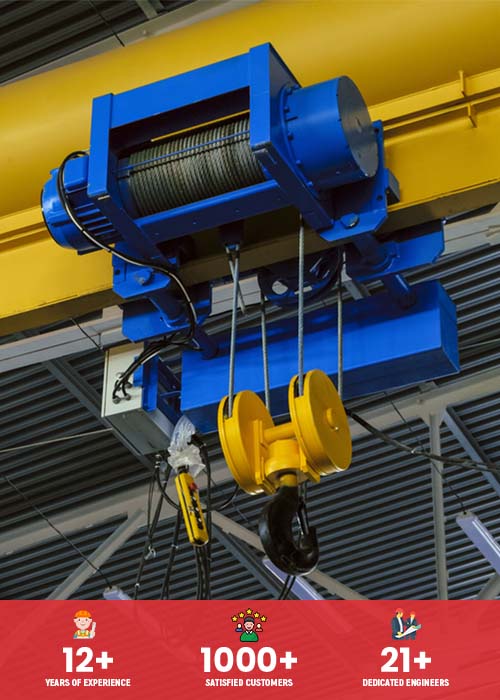Hoist Crane Maintenance Tips for Indian Manufacturers
It’s difficult to picture load transfers in a manufacturing without overhead cranes. Overhead crane use has steadily increased during the past few years. An overhead crane is a piece of machinery used to move items around a facility that is made up of two parallel beams. It can be used to build or maintain structures like garage workshops, workstations, and warehouses. The crane is supported by the two beams and can move the load forward, backward, or side to side. There are many different kinds of cranes manufactured by hoist crane manufacturers in India, including jib cranes, overhead bridge cranes, and overhead gantry cranes. Cranes vary in their technological characteristics, challenges, benefits, and drawbacks.
Maintenance of hoist cranes is a crucial factor as it makes them durable and makes them able to serve for a longer time without breakdowns. In this article, we will discuss some hoist crane maintenance tips for Indian crane manufacturers.
Safety and precautions
- An overhead crane should never be used without workers who are knowledgeable and well-trained. People can lose their life due to even the smallest of errors.
- To prevent a load moment that can cause the crane to topple over, the loading state of the crane must be taken into account.
- It is necessary to post “hoist danger” signs all around the work area. The employee must not stand or do tasks below the hoist area.
- When operating an overhead crane, employees should observe the appropriate safety precautions and personnel length measures.
- At least once a year, a professional inspection of the load-bearing structure should be carried out, and the results should be supplied for the crane file.
- Steer clear of swinging a crane, grab or hook when an above trolley or hoist is in motion.
- Check the crane for any loose objects that might come off while it’s operating.
- A fire extinguisher that is fully charged must be installed in the crane that has an operator cabin.
- For the best rotation and operation, a crane’s stability is greatly dependent upon the quality and levelness of the ground. The crane’s stability is determined, in part, by the radius to the load gravity, the load weight, and the angle of the boom.

Proper Safety And Maintenance
- Inspections of worn or cracked areas in the wielded area are necessary for safety reasons.
- Before using, it is necessary to inspect the hook roller brackets, welds, locking mechanisms, bearings, pins, shafts, gears, and detachable outrigger attachment.
- Prior to starting, check all of the brakes, including the trolley motor and bridge brakes.
- It is necessary to inspect the main chords and lacings for evidence of flaking or cracking paint.
- You will probably verify the functionality of the bridge and trolley motor brakes as well as the condition of all the below-the-hook devices.
- Verify that all indicators, including the crane’s load and boom angle indications, are properly calibrated.
- It is necessary to verify that the locking devices, motion lever, and brakes respond correctly. Aside from that, the load moment indicator (LMI) or rated capacity indicator (RCI) accuracy needs to be verified.
- There must be routine inspections of the crane. This covers loosened, missing nuts, bolts, or pins as well as worn, cracked, or deformed pieces.
- The hook block requires more attention than usual. It would be beneficial if you checked to make sure the load chain and wire rope are positioned correctly. Adjust those if they are not positioned correctly.
- When the crane is moving, the operator needs to pay close attention.
- Verify that the chain sprockets are functioning properly and that the wire rope is free from kinking, cutting, crushing, unstranding, or heat damage.




